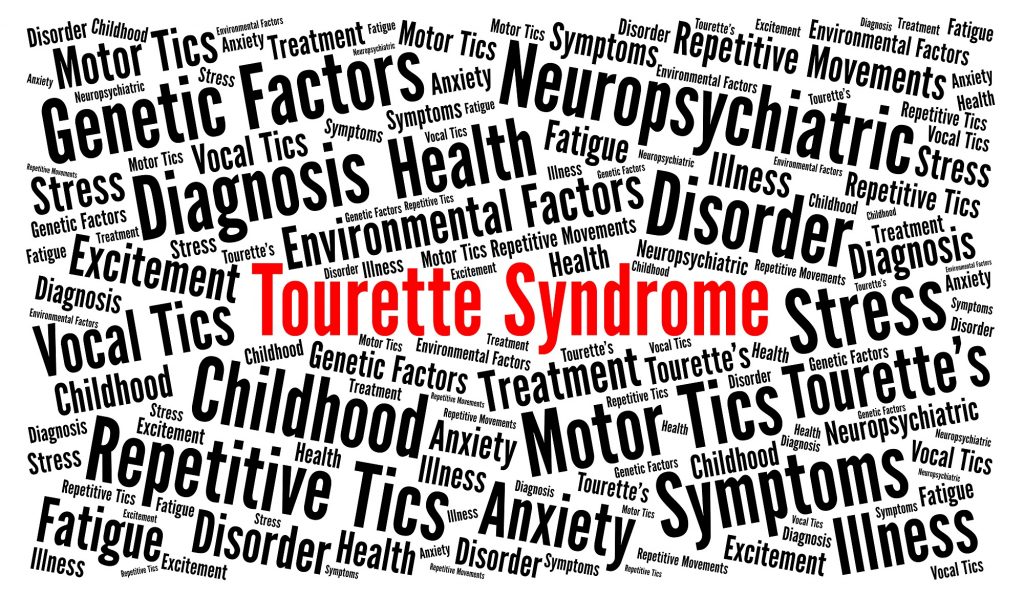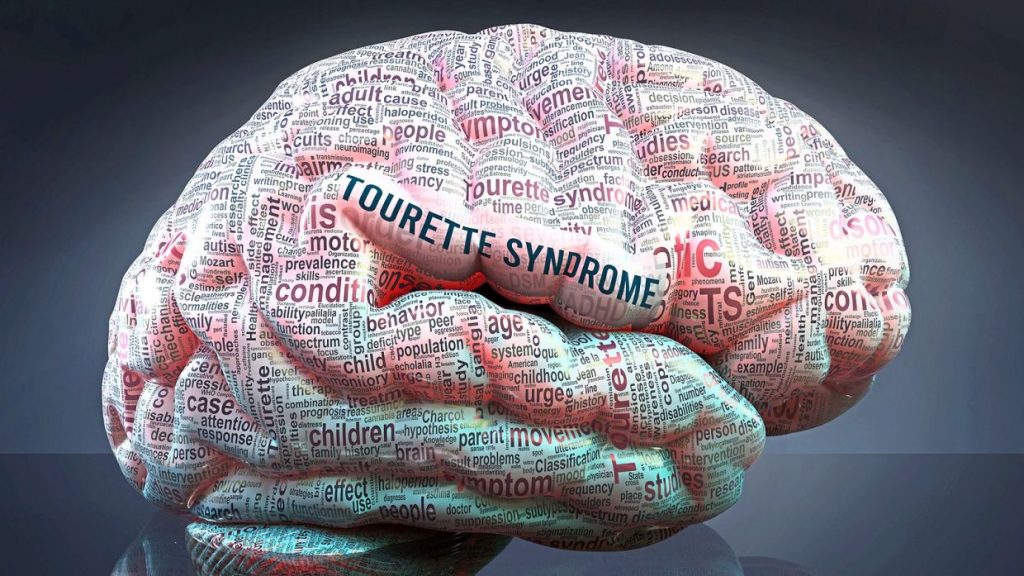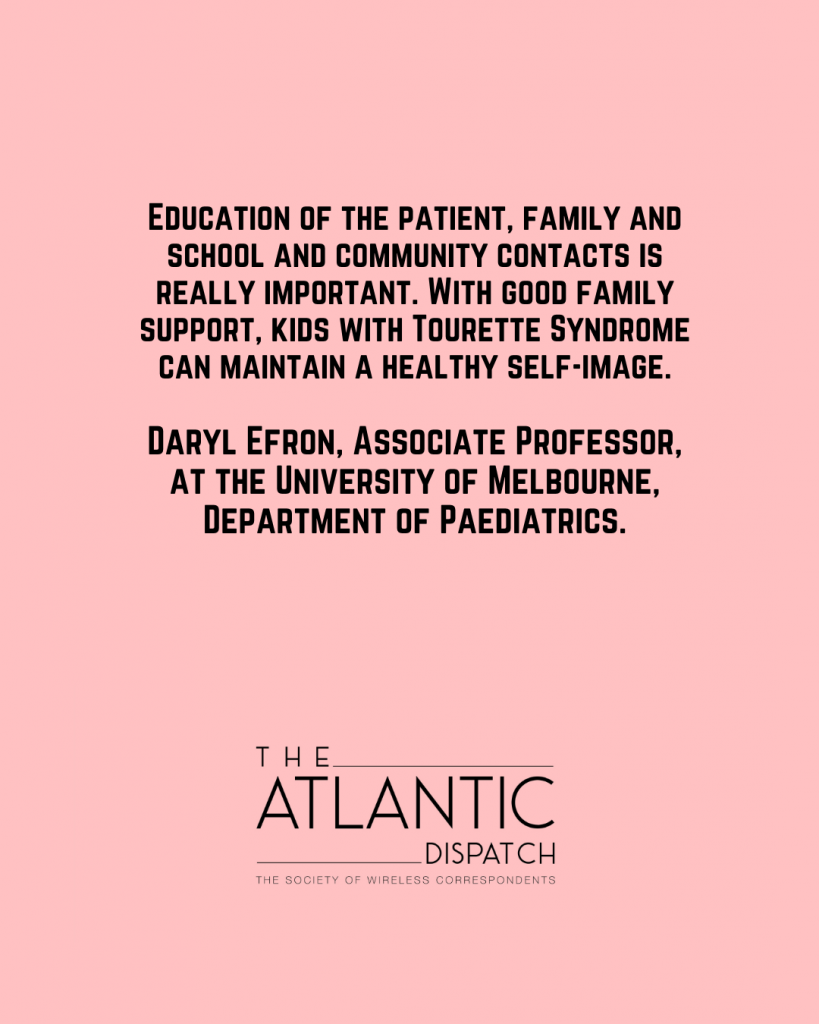Tourette Syndrome is both a fascinating and complex neurological disorder that can be intriguing and challenging to understand. It is essentially characterised by involuntary and repetitive movements, known as tics, which can be both motor and vocal in nature. These tics can range from mild to severe and may vary in frequency and intensity over time.
Imagine a symphony of unexpected movements and sounds, where the conductor is an intricate network of misfiring signals within the brain. In this symphony, the individuals affected by Tourette’s syndrome are the talented yet involuntary performers, expressing themselves through a unique composition of tics.

We have recently seen the effects of these tics in Lewis Capaldi’s documentary ‘How I’m Feeling Now.’ During the documentary, he is diagnosed as having Tourette Syndrome, and we are given an insight into what living with the condition is like. We have also seen his high-profile struggle with the affliction played out at Glastonbury, which has since forced him to take a break away from performing.

His battle with Tourette’s has helped to shine a light on a disorder which many of us still do not understand. Other celebrities such as Billie Eilish and Seth Rogan, have also opened up about their experiences with the disorder and former sports star, Tim Howard has previously spoken candidly about how Tourette’s affected him throughout his career.

Motor tics, which is what Lewis Capaldi struggles with, often manifest themselves as sudden, rapid, and uncontrollable movements, such as eye blinking, facial grimacing, shoulder shrugging, or jerking of the limbs. It’s like a spontaneous choreography that takes over the body, causing abrupt and sometimes unconventional movements.
Then there are vocal tics, which create a chorus of involuntary sounds, ranging from simple grunts, throat clearing, or sniffing, to more complex utterances like words or phrases.
One of the most intriguing aspects of Tourette Syndrome is its ever-changing nature. The types and intensity of tics experienced can vary over time, shifting in frequency, duration, and even characteristics. This constant metamorphosis can make the condition an enigma to both the individual and those around them.
Although Tourette Syndrome presents unique challenges, it’s important to recognise the resilience and strength of those living with it. They navigate a world where every movement and sound has the potential to be a surprise, yet they find ways to adapt, cope, and excel in their own distinctive journeys.
To find out more about Tourette Syndrome and the stigma which still exists around it, The Atlantic Dispatch sat down with, Daryl Efron, Associate Professor, at the University of Melbourne, Department of Paediatrics.

How much do we actually know about Tourettes Syndrome Daryl and do we know what the root cause of it is?
Efron: Tourette Syndrome (TS) is a neurodevelopmental disorder characterised by the presence of multiple motor and vocal tics, of more than one year duration, causing significant functional impact.
TS has an onset during childhood and typically runs a waxing and waning course i.e. periods where tics are very severe, interspersed with less severe periods. Sometimes it takes get worse for an obvious reason e.g. Stress related to starting a new school year or some other big change. However, frustratingly they often get worse for no apparent reason at all.
The good news is that it usually gets much better through the teenage years, and is often quite mild or even absent by adulthood. The cause is not well-understood, however, it is quite strongly genetic – that is it often runs in families. Differences in the levels of functioning of the brain chemical neurotransmitters dopamine, glutamate and GABA have been implicated.
What are some of the symptoms of Tourettes?
Efron: Common simple motor tics involve the eyes (e.g. blinking, rolling the eyes), face (e.g. nose twitching, nasal flare), head (nodding), neck (jerking), shoulders (shrugging) or hand or leg (jerking). Other motor tics include licking, hitting, jumping, smelling, spitting, squatting, abnormalities of gait, forced touching, kissing self or others etc.
These can be distressing either because it is embarrassing or painful for the individual. Some people with TS have more complex motor tics – this may involve either a cluster of simple motor tics (e.g. a few facial tics occurring together to form grimacing), or a coordinated sequence of movements.
Vocal tics can also be ‘simple’ (e.g. throat clearing, sniffing, grunting, coughing, barking, snorting, humming, clicking and low- or high-pitched noises) or more complex e.g. uttering of obscene words or phrases (coprolalia), interruptions in the flow of speech, and sudden alterations in pitch and volume.
Some people with TS exhibit non-obscene socially inappropriate behaviours (NOSI): saying something inappropriate or acting inappropriately which can have serious social consequences.
Other associated features include movements or gestures of an obscene nature (copropraxia), repeating someone else’s words or phrases (echolalia) or actions (echopraxia). Most children and adolescents with TS have a range of comorbid or associated problems, including anxiety, ADHD, obsessive-compulsive behaviours and learning difficulties.

What kind of treatments are available to help deal with the affliction?
Efron: The goals of treatment are to reduce the severity and impact of symptoms, manage associated problems, and improve social functioning and quality of life.
Psychologists can be very helpful, either addressing anxiety generally or specifically addressing the tics with a specialised programme called Comprehensive Behavioural Intervention for Tics (CBIT).
The program is based on the hypothesis that tics manifest in response to a “premonitory urge”. Premonitory urges are uncomfortable sensations that often precede tics. Unfortunately not many are trained to deliver CBIT.
Medications can be helpful in reducing tics but are not always highly effective, and often cause side effects. New experimental treatments are being considered, including medicinal cannabis, transcranial magnetic stimulation (TMS) and Deep brain stimulation
Is there a stigma surrounding tourettes? Does more need to be done to raise awareness around how debilitating it can be for an individual?
Efron: TS can potentially be a highly stigmatising condition, however, most kids are actually very understanding and kind to their peers with TS once they understand a little bit about it.
Education of the patient, family and school and community contacts is really important. With good family support, kids with TS can maintain a healthy self-image. It is though a very frustrating condition and can have quite profound effects on the individual and their family, particularly when severe.
What more can be done to help people living with tourettes and would early diagnosis help somebody suffering from it?
Efron: Public education (like this!) The important thing is that if the tics are causing problems then the person should get an assessment, diagnosis and treatment.

With thanks to Daryl Efron, Associate Professor, at the University of Melbourne, Department of Paediatrics.
